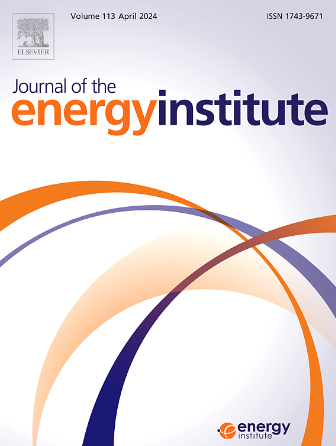Constructing bifunctional Co/CeO2 micro-structured catalysts for soot elimination
IF 6.2
2区 工程技术
Q2 ENERGY & FUELS
引用次数: 0
Abstract
Catalytic oxidation is considered to be an efficient technology for eliminating the soot particulates emitted from diesel engines. Nevertheless, the inadequate contact between the catalyst and soot particulates, as well as the low oxidation capability of the catalysts, severely limit the further development of this technique. In this study, the bifunctional Co/CeO2 catalysts with flower-like structure were deliberately designed and prepared. The optimal catalyst (20 % Co/CeO2) demonstrated exceptional catalytic performance, with T50 as low as 364 °C. Furthermore, a series of characterizations were performed to investigate the catalyst structure-activity relationship. The results indicated that the Co/CeO2 demonstrated two obvious functions in the improvement of soot catalytic elimination. One was that three-dimensional flower-like morphology enhanced the contact efficiency between the catalysts and soot particulates. The other one was the synergistic interactions between CeO2 and Co3O4 gave rise to the abundant active surface adsorbed oxygen species, significantly improving the catalytic oxidation activity for soot elimination. This work offered a new avenue to design and construct efficient catalysts for diesel soot combustion.
构建双官能团Co/CeO2微结构除烟催化剂
催化氧化被认为是一种有效的消除柴油发动机排放烟尘颗粒的技术。然而,催化剂与烟尘颗粒的接触不足,以及催化剂的低氧化能力,严重限制了该技术的进一步发展。本研究特意设计并制备了具有花状结构的双功能Co/CeO2催化剂。最佳催化剂(20% Co/CeO2)表现出优异的催化性能,T50低至364°C。此外,还对催化剂的构效关系进行了一系列表征。结果表明,Co/CeO2在改善烟尘催化消除方面表现出两种明显的功能。一是三维花状形态提高了催化剂与烟尘颗粒之间的接触效率。二是CeO2与Co3O4之间的协同作用产生了丰富的活性表面吸附氧,显著提高了消灰的催化氧化活性。本研究为设计和构建高效的柴油油烟燃烧催化剂提供了新的途径。
本文章由计算机程序翻译,如有差异,请以英文原文为准。
求助全文
约1分钟内获得全文
求助全文
来源期刊

Journal of The Energy Institute
工程技术-能源与燃料
CiteScore
10.60
自引率
5.30%
发文量
166
审稿时长
16 days
期刊介绍:
The Journal of the Energy Institute provides peer reviewed coverage of original high quality research on energy, engineering and technology.The coverage is broad and the main areas of interest include:
Combustion engineering and associated technologies; process heating; power generation; engines and propulsion; emissions and environmental pollution control; clean coal technologies; carbon abatement technologies
Emissions and environmental pollution control; safety and hazards;
Clean coal technologies; carbon abatement technologies, including carbon capture and storage, CCS;
Petroleum engineering and fuel quality, including storage and transport
Alternative energy sources; biomass utilisation and biomass conversion technologies; energy from waste, incineration and recycling
Energy conversion, energy recovery and energy efficiency; space heating, fuel cells, heat pumps and cooling systems
Energy storage
The journal''s coverage reflects changes in energy technology that result from the transition to more efficient energy production and end use together with reduced carbon emission.
 求助内容:
求助内容: 应助结果提醒方式:
应助结果提醒方式:


